In Search for Workers, One Manufacturer Pulls Out the Stops
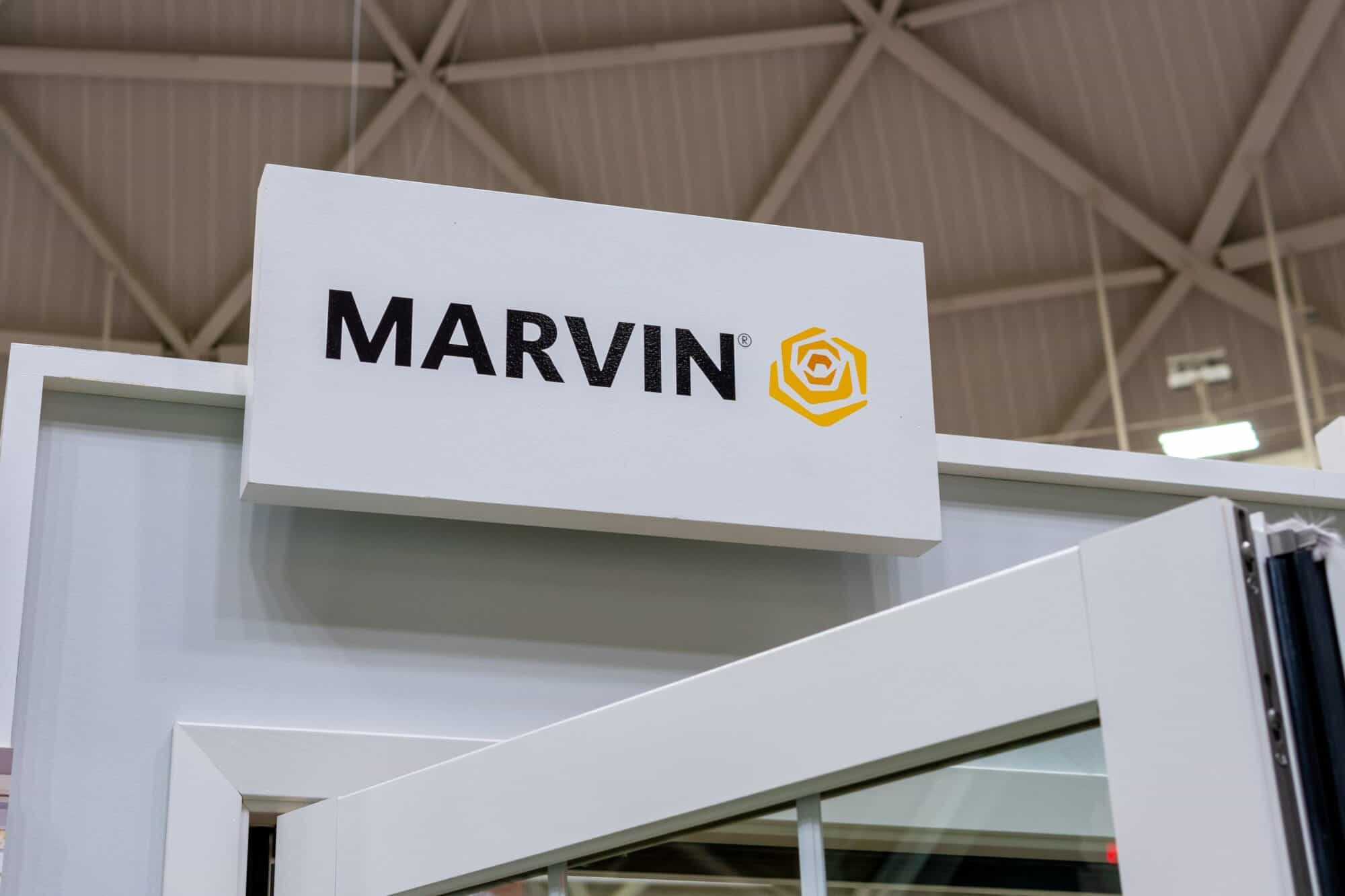
Marvin, a window and door manufacturer based in Warroad, Minnesota, is looking thousands of miles south to fill job openings (The Wall Street Journal, subscription).
What’s going on: Marvin employs about 700 people at its Warroad location. With older-generation workers retiring at the rate of about one employee a week and a town population that hasn’t grown in decades, the company “came up with a recruitment plan called ‘The Path North,’ which aims to find workers in Puerto Rico and Florida willing to uproot their families and settle in a cold northern town”—but it’s proving a difficult sell, even with generous relocation bonuses and temporary housing.
- Unemployment in Puerto Rico and Florida is low, so Marvin is fishing for talent in relatively sparsely populated ponds.
- Of the 115 workers who came from Puerto Rico in the past eight or nine months, just 63 remain at the company.
- Marvin has 10 other locations throughout North America.
Why it’s important: Marvin’s challenge is emblematic of “manufacturing in America today. The U.S. population is barely growing, baby boomers are exiting the workforce,” many young people are unaware of the many advantages of working in manufacturing and “[t]here is little political will for lasting immigration reform that could fill workforce gaps.”
- If current trends continue, the U.S. will have 2.1 million open manufacturing positions by 2030, according to a joint study by Deloitte and the Manufacturing Institute, the NAM’s 501(c)3 workforce development and education affiliate.
Well worth it: Still, for those who come to Marvin, the rewards are significant.
- The company helps employees find permanent housing and is even an investor in a local apartment complex.
- There is job security, too. When orders slowed at one of its factories a few years ago, the company offered cash bonuses to employees willing to relocate to Warroad.
- Marvin has also helped Warroad schools hire Spanish-language translators to assist the children of new hires.
The final say: “Tapping into new talent pools is especially critical in rural areas, whether it’s done via relocation support, engaging second chance populations or participating in initiatives such as the Manufacturing Institute’s Heroes MAKE America program, which is building connections between the military community and the manufacturing industry by bringing in new workers,” said MI President and Executive Director Carolyn Lee. “We need to engage all talent pools to fill the 500,000 jobs in manufacturing today.”
Manufacturing in 2030: The Opportunity and Challenge of Manufacturing Data
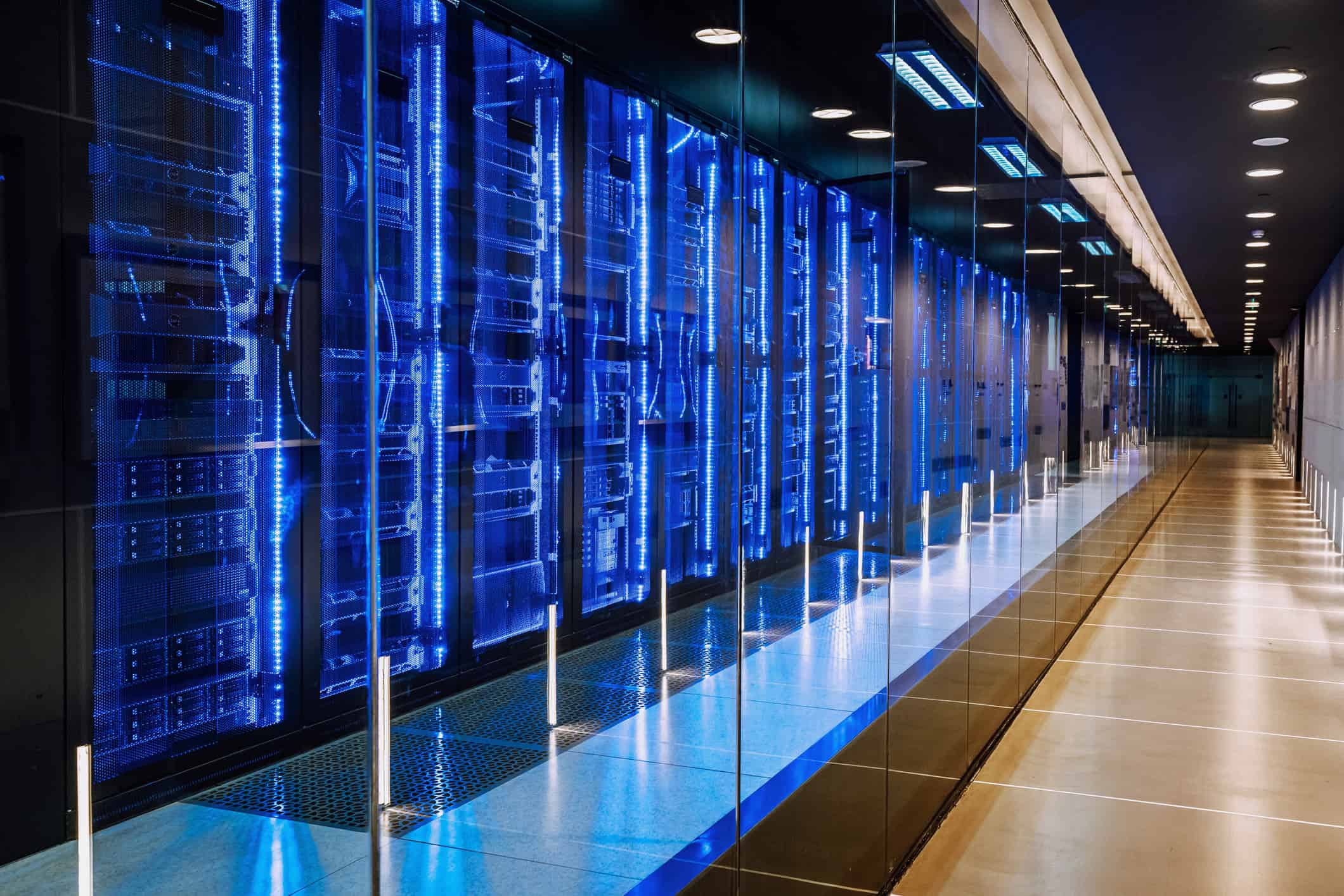
As manufacturers move toward building smarter factories with connected machines, the data those systems produce can offer a host of benefits: improved efficiency, better productivity, informed decision-making, value creation and, ultimately, competitiveness. Yet becoming a data-driven business comes with its share of challenges. In this year’s Manufacturing in 2030 Survey, Data Mastery: A Key to Industrial Competitiveness, the NAM’s Manufacturing Leadership Council sheds light on the successes and opportunities for how manufacturers are transforming their operations with data.
Security and privacy concerns: As factories become more connected, cybersecurity becomes a greater imperative. For this reason, survey respondents validated that both data security and data privacy are essential.
- More than 90% of respondents have a formal or partial policy on data security and data privacy.
- About two-thirds of manufacturers have a formal or partial policy on data quality.
- More than 60% have a corporate-wide plan, strategy or guidelines for data management, but only 15% follow the plan in its entirety.
How data is used: As manufacturers advance along their M4.0 journey, data is becoming their lifeblood, driving insights and decision-making. Yet the survey revealed a gap between available data sources and their utilization, a notable area for improvement as the industry looks toward the future.
- Spreadsheets are still king: 70% of manufacturers enter data to them manually, and 68% still use them to analyze data.
- 44% of manufacturing leaders say the amount of data they collect is double what it was two years ago, and they anticipate it will triple by 2030.
- While nearly 60% of manufacturers use data to understand and optimize projects, there is a shift toward using data to make predictions about operational performance, including machine performance, in the next decade.
Business impact: Most manufacturers leverage data to find ways to save money or promote business growth. However, less than half have a good understanding of the dollar value of their data.
- Only about 25% of manufacturers have high confidence that the right data is being collected.
- Most manufactures have only moderate confidence in their analytic capabilities.
- Top challenges include data that comes from different systems or in different formats (53%), data that is not easy to access (28%) and lack of skills to analyze data effectively (28%).
- However, despite those challenges, 95% of manufacturers say data makes for faster and/or higher-quality decision-making.
The bottom line: An overwhelming majority of manufacturers (86%) believe that the effective use of manufacturing data will be “essential” to their competitiveness. But to realize data’s potential, manufacturers must figure out how to organize and analyze their data effectively, ensure that their data is trustworthy and align their business strategy closely with their data strategy.
Explore the survey: Get a deeper look at the current state of data mastery in manufacturing. Click here to download your copy.
In It for the Long Haul: C.H. Robinson Takes on Sustainability

It’s not every day that an international company meets an ambitious sustainability goal two years early. But last May, that’s exactly what happened at 119-year-old transportation logistics provider C.H. Robinson.
- The goal under discussion: a company-wide reduction in intensity of Scope 1 and 2 emissions—those emissions generated by the company’s own operations—of 47% (more than the 40% targeted). C.H. Robinson had previously calculated meeting the objective by 2025.
Simple but effective: “Most of it was looking at where we could find inefficiencies” and correcting them, said C.H. Robinson Vice President of Environment, Social and Governance Rachel Schwalbach. Some changes came from suggestions “our own employees brought forward: LED lighting, responsible use” of electricity.
- Efforts also included a marked increase in the company’s use of renewables generally. From 2019 to 2023, C.H. Robinson renewable-energy purchases rose 40%.
Not an either/or proposition: The Eden Prairie, Minnesota–based company—which solves logistics challenges for clients through freight forwarding and other innovative transportation solutions—is proof positive that businesses don’t have to choose between good environmental stewardship and profitability.
- In fact, “sometimes the sustainable option is actually the less expensive option,” Schwalbach told the NAM. “C.H. Robinson is working with suppliers every day to drive out waste, and often that’s been because we’ve looked at it through a lens of cost savings or time reduction. Now it’s also through the lens of sustainability.”
- What’s more, “if you’re approaching sustainability right, it should be tied to your overall business strategy. Sometimes it’s as simple as making sure you’re compliant with rules and regulations” as you meet sustainability requirements.
A competitive advantage: Reducing the footprint of operations can be a competitive advantage for manufacturers, too.
- “We get asked about sustainability by nearly all our stakeholders, so it really has to be a part of strategic decision making across the business,” Schwalbach continued. “Our shippers are also getting asked about [sustainability] by their investors and customers. People across the business are thinking about it, so it’s [to our advantage to] make sure it’s integrated across all areas.”
No business is an island: Businesses must keep in mind that sustainability is a shared interest, and the environment’s health is best served by teamwork, not isolated efforts, according to Schwalbach.
- “As companies continue to put big [sustainability] goals out there, I cannot emphasize enough the need for collaboration across industries, as clichéd as it sounds,” Schwalbach said. “Having people who are willing to come to the table and say, ‘Hey, let’s figure this out together,’ is going to be pretty critical.”
- For C.H. Robinson, that means engaging with customers, carriers and a broad range of other stakeholders.
Supporting climate-friendly practices: The right moves by policymakers can also help support the private sector’s sustainability efforts.
- “As we’re looking increasingly at alternative fuels and electric vehicles here in the U.S., we need an electric grid that can support the transition to a lower-carbon economy,” Schwalbach said. “Continuing to invest in [strengthening] the grid will help us invest in the right technologies. We need to be able to move forward quickly in a way that doesn’t cause disruption to the supply chain and transportation.”
- Companies want clarity around regulations, too. “There are so many [regulations] coming out right now, and companies want to know, ‘How do I get the right [climate-related] data? How do I make sure the data are accurate?’”
In for the long haul: So what’s next for C.H. Robinson? A continued focus on conservation, for one thing.
- “You meet your goals, and that’s really exciting, but there’s no time to sit around,” Schwalbach said, adding that the company is now in the process of figuring out “what new sustainability goals will look like for carbon reduction.”
- Ultimately, those goals will be met by ensuring a commitment to the environment remains a company-wide focus, she told us.
- “Doing sustainability well means it’s integrated. C.H. Robinson is a 119-year-old company, and sustainability is about making sure we’re going to be successful for another 119 years.”
Rio Tinto Seeks to Meet Growing Copper Appetite
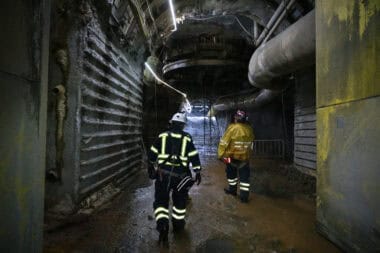
The demand for copper is skyrocketing—and global mining company Rio Tinto is powering forward full throttle to meet it (CNBC).
What’s going on: “The red metal, considered a barometer for economic health, is a vital component for the construction and defense industries as well as a key component in electric cars, wind turbines and the power grid.”
- However, current mines and in-the-works projects “will meet only 80% of copper needs by 2030, according to the International Energy Agency.”
- “There’s this growing consensus that demand fueled by the energy transition is going to outstrip supply, and that’s why analysts say we are simply not going to have enough of it,” said CNBC Markets Reporter Pippa Stevens in a recent CNBC video. “And copper really is the backbone of decarbonization goals.”
The challenges: Copper mining is difficult and expensive—and it takes 10 to 15 years to build each mine, Rio Tinto CEO Bold Baatar told CNBC.
A beneficial metal: Copper is the most economical conductor available, and directly and indirectly, it supports more than 395,000 U.S. jobs and more than $160 billion in economic output.
Behind the scenes: CNBC went behind the scenes at Rio Tinto’s Kennecott operations in Utah, where “about 200,000 metric tons of copper are produced annually.”
- There, Rio Tinto is increasing its open-pit mining operations and has started an underground project to mine higher-grade ore.
- Kennecott is unique for its smelter and refinery, “where the ore is processed into almost pure copper.”
Permitting challenges: Another of Rio Tinto’s projects, the Resolution Copper mine in Arizona, has the potential to power up to 25% of U.S. copper demand—but it has been mired in a regulatory morass for the better part of two decades.
- “The last hard-rock mine that was permitted was in 2008,” Rio Tinto Copper Chief Operating Officer Clayton Walker told the news outlet. “We’ve been working on the Resolution Mine for about 18 years.”
Independence is possible: “Theoretically, there are enough reserves in the U.S. that we could become independent for our copper needs,” Walker continued. “It’s just, how do we do that? How do we get the permits?”
What the NAM is doing: The NAM has been engaging directly with the Biden administration and members of Congress through meetings and briefings at NAM headquarters to push for comprehensive permitting reform.
- In addition, the NAM, along with members of the NAM’s Council of Manufacturing Associations and Conference of State Manufacturers Associations, last summer launched Manufacturers for Sensible Regulations, a coalition that seeks to speed up the frequently slow, arduous federal permitting process for energy infrastructure projects and address the large number of regulations being churned out by the federal government.
Announcing the Winners of the 2024 Manufacturing Leadership Awards
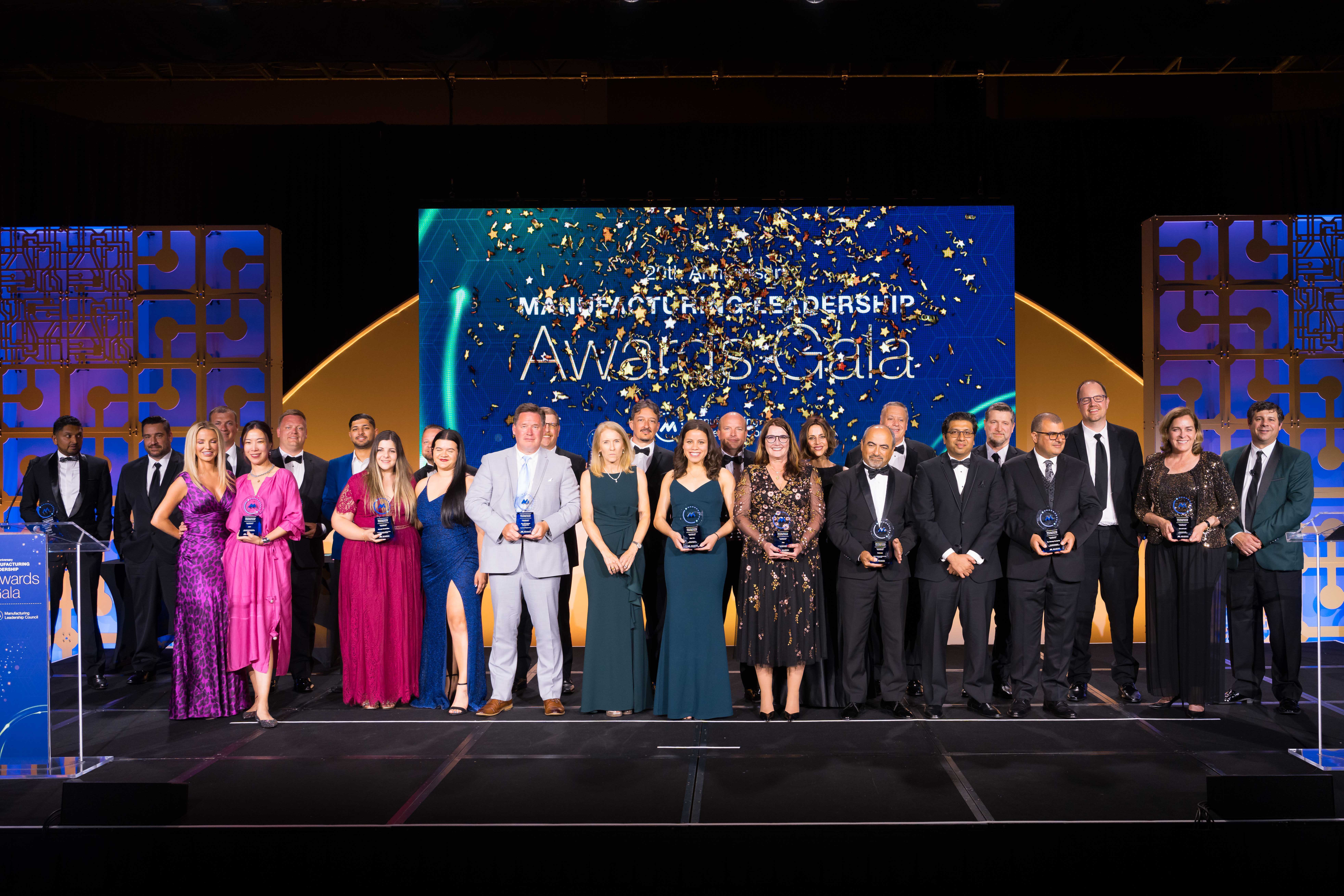
The names are in! The Manufacturing Leadership Council—the NAM’s digital transformation division—is pleased to announce the winners of the 2024 Manufacturing Leadership Awards.
Now in its 20th year, the awards competition recognizes outstanding manufacturing companies and their leaders for groundbreaking use of advanced manufacturing technology.
“The class of 2024 should indeed be proud of their achievements in advancing the digital model of manufacturing,” said MLC Founder, Vice President and Executive Director David R. Brousell. “The awards reflect the truly incredible amount of innovation taking place in all sectors of the industry.”
Manufacturing Leader of the Year: Cooley Group President and CEO Daniel Dwight is the 2024 Manufacturing Leader of the Year.
- Dwight, who also serves on the MLC’s Board of Governors and is a member of the Executive Committee of the NAM Board of Directors, has overseen a significant turnaround in Cooley’s business performance through digital transformation, with a commitment to investing in smart factory technologies and developing a digital-ready workforce and business culture.
- In addition, the MLC named Cooley Group the 2024 Small/Medium Enterprise Manufacturer of the Year.
Large Enterprise Manufacturer of the Year: Intertape Polymer Group is the 2024 Large Enterprise Manufacturer of the Year.
- The award recognizes IPG’s achievements in digital transformation, including technology integration and workforce training.
- The company has also made noteworthy strides in sustainability through reductions in both energy usage and waste.
More honors: The MLC also announced winners in 11 project and individual categories, as well as the winners of the Manufacturing in 2030 Awards. The latter are given to projects with particularly forward-thinking innovations.
- The MLC honored all finalists and winners at the Manufacturing Leadership Awards Gala last night in Marco Island, Florida. A complete list of finalists and winners is available here.
Nominations for the 2025 season of the Manufacturing Leadership Awards will open on Sept. 16, 2024. More information is available here.
Centrus Aims to Make U.S. a Top Uranium Enricher
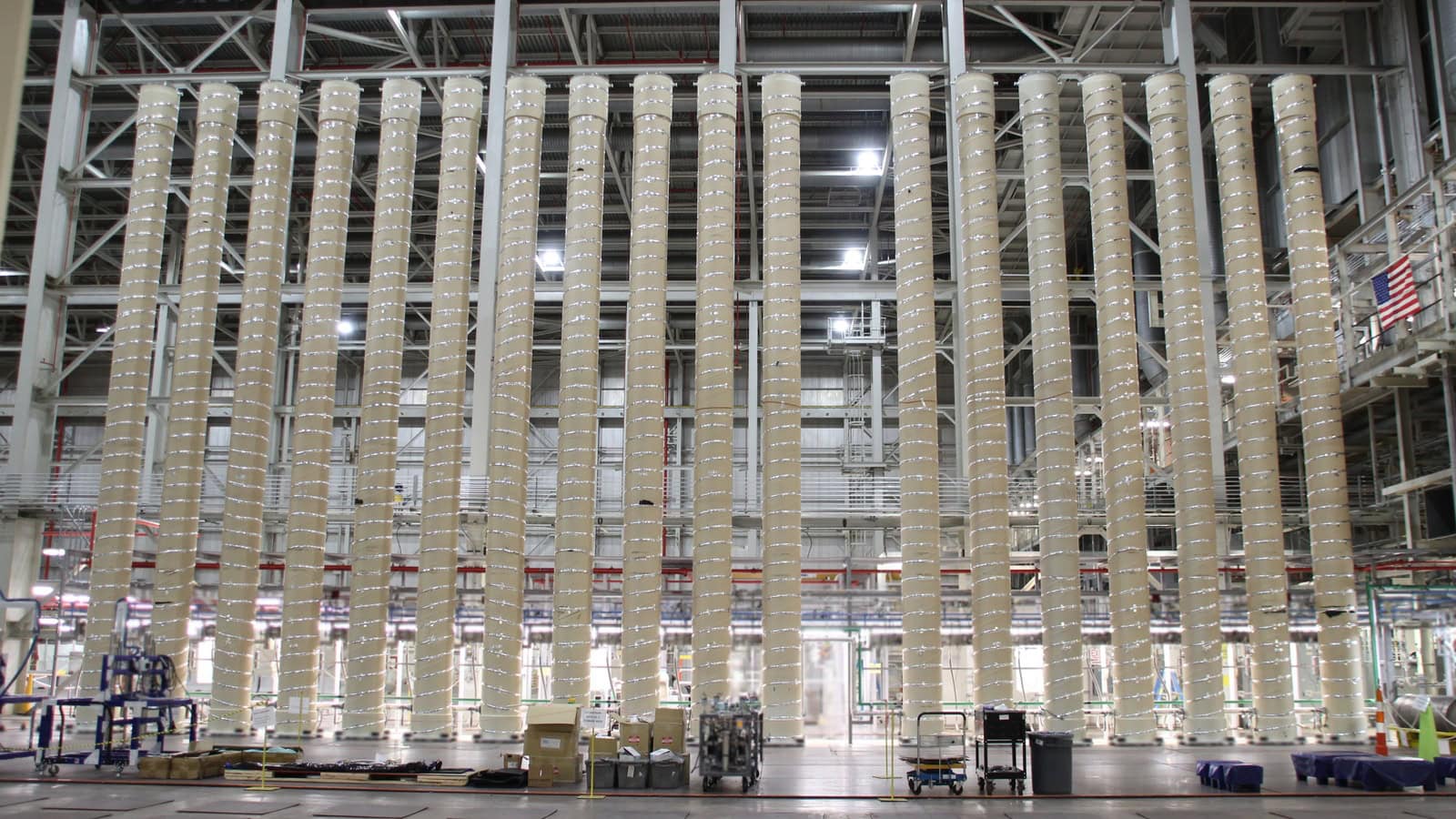
The most difficult part of creating nuclear power is enriching the uranium—and that’s precisely where Centrus Energy Corporation has set out to make America the global leader.
A unique position: The Bethesda, Maryland–headquartered Centrus, which is the only U.S.-owned enricher of uranium, can trace its roots as a company back to the Manhattan Project, the secret government initiative during World War II that brought the U.S. into the atomic age.
- The company is uniquely poised to make good on its aim to bring clean, plentiful, affordable and reliable energy to the world.
- “Nuclear power is reliable—so much so that we’ve seen a lot of the growth in nuclear generation around the world,” Centrus President and CEO Amir Vexler told the NAM.
- In 2023, global nuclear power generation grew 8%, after declining the prior year.
Geopolitical-fueled growth: The driver behind the expansion? Russia’s 2022 invasion of Ukraine, according to Vexler.
- “Since 2022, a lot of nations realized they have to have some level of sovereignty around power generation,” he said. “With nuclear, you’re not dependent on fossil fuels from other countries, which is particularly important if you’re a nation that’s not rich in resources.”
- In the more than two years since the start of the war in Ukraine, Russia has lost its position as the world’s top oil and gas exporter, as the U.S. and allies have sought to wean themselves off Russian energy imports.
A catch-22: But there’s no nuclear power without uranium—and ironically, Russia holds approximately 44% of the world’s uranium-enrichment capacity, according to the Department of Energy, and supplies nearly a quarter of the enriched uranium used in U.S. reactors.
- However, that monopoly may soon start to crumble, as in May President Biden signed bipartisan legislation to ban the import of Russian low-enriched uranium, also known as LEU.
Building up domestic supplies: At the same time, the U.S. is moving to ramp up domestic uranium production—and Centrus is key to making it happen.
- In November 2022, the DOE announced a $150 million cost-shared award with a Centrus subsidiary to demonstrate the capability to produce high-assay low-enriched uranium, or HALEU, an advanced fuel form needed to power the next generation of nuclear reactors.
Sole producer: HALEU is uranium enriched to between 5% and 20% uranium-235, and Centrus’ Piketon, Ohio, enrichment plant is the only American facility licensed to produce it.
- The Piketon facility began HALEU enrichment in late 2023, becoming the first U.S.-owned enrichment plant to start production in nearly 70 years. With sufficient public and private investment, Centrus could add thousands of centrifuges for the large-scale production of LEU for existing reactors and HALEU for future reactors. The plant could also provide enriched uranium for national security missions.
Filling a crucial vacuum: The removal of Russia from the uranium-enrichment landscape “creates a huge vacuum,” and it’s America’s to fill. In fact, doing so is a national security imperative, Vexler continued.
- “The enrichment process—creating the technology and building the machines—is so demanding, we as a country cannot cede it to others. Once that knowledge leaves our shores, we will never get it back. We have ceded [nuclear knowledge] to the Russians and Europeans before and it’s hard to catch up. … This is a complex supply chain that is extremely specialized, with an enormous amount of value add.”
- If the U.S. establishes robust uranium enrichment processes and facilities, he said, the country “could become a net exporter [of nuclear fuel] to Europe, Latin America [and] Asia. If we don’t compete in those markets, the Russians will.”
Safe, sound and lucrative: The cartoonish portrayal of the nuclear industry in popular culture has done it a disservice. It’s a fundamentally safe sector—and it can ensure well-paying jobs for years to come.
- “There is such great misinformation” about nuclear energy, Vexler said. “One of our biggest enemies is probably animated shows with catastrophic images [of nuclear plants]. … Consider that a U.S. company is enriching uranium here and will create a generation of people that will know about how to do it—technicians, electricians and more who understand these complex machines.”
- The nuclear sector is assiduously regulated and held to high standards, and it’s always learning, evolving and coming up with new reactor designs. “It’s probably one of the safest industries in the world.”
The last word: Vexler is optimistic about the future—both for Centrus as a company and for the U.S. as a major nuclear-power exporter.
- “I commend the U.S. government; there are many in it who are strong champions of nuclear power,” Vexler told us. “Getting the amount of funding that’s been allocated is a great accomplishment. With the continued support of the government and a public–private partnership, we will bring enrichment and all the associated benefits back to the U.S.”
Beyond the Buzzwords: Digital Transformation in Manufacturing

Technology is constantly changing. But how will this era of digital transformation change the manufacturing industry?
The NAM’s Leading Edge program partnered with Siemens to present “Beyond the Buzzwords: A Digital Thread Journey,” a four-part webinar series dedicated to understanding how cutting-edge ideas affect manufacturers. In the first episode, we put the digital transformation journey in context by introducing the “digital thread.” In the next three, we dove deeper into cloud acceleration, artificial intelligence and radical flexibility.
Cloud acceleration: A business’s digital needs are covered by a combination of software, hardware and physical infrastructure. If you turn to an offsite partner to provide any of those elements, then you are probably already using cloud acceleration to support your business.
- We spoke with Surf Loch Director of Project and Process Development Bryan Behr, Siemens Senior Vice President of Cloud Application Services Raymond Kok and Surf Loch Systems Engineer Miles Miller to learn more.
What it is: Cloud acceleration refers to a wide range of on-demand computing services hosted outside of your organization.
- Kok explained that cloud acceleration “is really a layer cake with three layers to it.” At the highest level is “infrastructure as a service,” like data centers. In the middle is “platform as a service,” which might provide you with the building blocks to create your own applications. And at the final layer is “software as a service,” which is what you would typically get from a commercial software vendor.
How it helps: Cloud acceleration is easier, more cost effective and more flexible than managing all of your computing needs internally.
- “The cool thing about the cloud is how containerized everything is,” said Miller. “Data is readily available in a very organized fashion. … If there’s a problem or something needs to be solved, we can put that data in the right hands.”
- Behr also pointed out the benefits for digital security. “It’s either rely on one thing to maintain our security on premise or rely on a very sophisticated cloud team as part of a set of resources. … [I]t became pretty obvious that that appears to be a safer place for us than potentially on premise.”
Learn more: To learn more about cloud acceleration, check out the full webinar here.
AI/machine learning: We know that AI and machine learning are affecting every industry. But how should manufacturers use this new technology?
We brought together Siemens Advanta North America CEO Rani Russell Shea and Schaeffler Special Machinery Head of Electrical & Software Engineering Stefan Gahabka to learn about how to approach AI.
How it works: “The basic idea with AI is that you use data to train models,” said Shea. “Those models can run analytics and then essentially make decisions while learning things, like pattern detection. And then when you’re talking specifically about industrial AI, you’re talking about using AI for machine learning solutions, to solve business problems, things like factory optimization.”
Augmenting humanity: According to Shea and Gahabka, AI is intended to elevate the human factor in manufacturing, not replace it.
- “Everybody really wants to be able to do their job better, faster, more accurately, more safely, more sustainably,” said Shea. “AI … is going to help us do that, and by doing that, it’s literally elevating the role of people so we’re free to then use our creativity, our experience and our knowledge to really address the complex stuff.”
Doing more: AI can be used to measure, model and optimize everything from energy usage to supply chains—even helping manufacturers find the right partners to match their sustainability objectives.
- “We talk about the hard things like quality and cost, but can also think about the next step,” said Gahabka. “We can search for suppliers that have sustainable locations and goals.”
Learn more: To learn more about AI and machine learning, check out the full webinar here.
Radical flexibility: Many think of efficient manufacturing in terms of highly standardized automatable processes. Today, though, new technology is creating new possibilities for manufacturers.
We convened an expert panel with Vice-President of Digital Enterprise at Siemens Alastair Orchard, Global Engineering Director and Automation & Robotics Lead at Unilever Cesare Gibilaro, and Process Orchestration & Manufacturing Hub, Manager for Business Operations at Unilever Louise Gigg to introduce us to radical flexibility and the future of manufacturing.
What it is: Technological advancements are making it possible for manufacturers to make only what is needed when it is needed, rather than having hard-coded machines that limit what your business can do for the sake of efficiency.
- For much of the past century, according to Orchard, manufacturers had been focused on “removing degrees of freedom from manufacturing, making it more rigid, so that automation could be applied to extremely repeatable processes … radical flexibility really challenges that assumption to its core. And we asked: what if nothing was hard coded?”
- “The radical way of looking at it,” said Gigg, “is reconfiguring the asset that you have on automation [and giving it] a new task or a new capability that it didn’t have yesterday.”
How to use it: Radical flexibility is all about using your assets more effectively and more efficiently to deliver more options for your customers.
- Gibilaro highlighted the ability to change directions with incredible speed. “With radical flexibility, we have the opportunity to reconfigure the line. … It is not a matter of hours, but a matter of minutes.”
Why it matters: Because radical flexibility allows processes to shift quickly, there’s less wasted time and inventory.
- “It’s this ability to make things where you need them in small quantities,” said Orchard. “You’re risking much less, and you’re not forced to make these giant bets.”
Learn more: To learn more about radical flexibility, check out the full webinar here.
Beyond the Buzzwords: Manufacturers Tackle Digital Threads

A manufacturing business is filled with internal processes, workflows and standards, and the average factory generates thousands of data points per day. But how does a manufacturer capture that data? How do they preserve institutional knowledge? What if they could automate workflow, create seamless project handoffs and track development around every stage of a project’s life?
The NAM’s Leading Edge program, in partnership with Siemens, asked a panel of experts these questions in “Beyond the Buzzwords: The Digital Thread Journey,” the first in a four-part webinar series focused on understanding the “digital thread” in the workplace. In the first installment of the series, Siemens Vice President of Industry Strategy Dale Tutt and Anduril Industries Chief of Engineering Tom McCarthy introduced us to the idea of the digital thread—what it is, why it matters and how manufacturers can harness its power to succeed.
What it is: The digital thread is a concept rather than a specific technology. According to Tutt, it is about capturing and connecting every piece of a project’s life cycle digitally, and using that connectivity to provide a seamless transition of information from one functional area to another.
- “We often refer to a digital thread as singular, like it’s a thing,” said McCarthy. “But really, in my mind, it’s a lot of threads. … it ends up being more like a rope than a thread.”
Why it matters: A strong digital thread can automate a manufacturer’s workflow, capture data more effectively, preserve institutional knowledge, trace development processes and even capture the context that informs how decisions are made.
- Radically new technology means that organizations can accomplish these tasks more successfully than ever before—and that those who ignore that opportunity could be left behind.
- “The biggest risk is to do nothing and assume this fad will go away,” said McCarthy.
The challenges: One of the biggest challenges in building a strong digital thread in your own workspace is integration and data management.
- Manufacturing systems need to manage lots of data coming to it in different formats. But according to Tutt, that data needs to be organized in a comprehensible way. “It’s about producing the right data at the right time in the right … format,” said Tutt.
- According to McCarthy, a digital thread isn’t just a database. It is the key that deciphers that data and makes it accessible and intelligible for the user. “We need a Rosetta Stone,” said McCarthy, “to be able to understand how that data maps onto other tools.”
Implementation and technology: New technology and strategic concepts have enhanced our capacity to build strong digital threads—and with that new ability has come a new and urgent need to make use of the concept to strengthen the manufacturing industry.
- To get started on your own digital thread journey, Tutt and McCarthy agreed that manufacturers should dig into the existing workflows in their organization and introduce one tool at a time, rather than trying to engineer a master solution all at once.
- “You can work the digital infrastructure you need for that workflow in pieces, so you can build them up over time,” said McCarthy. “You got to keep your eye on the end game, but if you try to build it all at once, good luck.”
Learn more: To learn more about digital threads, check out the full webinar here.
Coming up: In the next three webinars in this series, Beyond the Buzzwords explores a few of those tools and concepts that drive the digital thread in the modern day: artificial intelligence, cloud advancements and radical flexibility.
NAM Gets New International Policy Lead

Former Assistant U.S. Trade Representative for World Trade Organization and Multilateral Affairs Andrea Durkin has joined the NAM as vice president of international policy, the NAM announced Monday.
An experienced leader: “Andrea brings a wealth of expertise to the job, with more than three decades of service in both the public and private sectors,” NAM President and CEO Jay Timmons said. “As a leader in international trade negotiations, her deep understanding of international policy will enhance the NAM’s strategic objectives significantly as we continue to build off of successful engagements with our counterparts across Europe and the North American continent.”
- Durkin is a foremost U.S. expert on international policy, having worked in both Republican and Democratic presidential administrations. In her most recent role, at the USTR in the Executive Office of the President, she negotiated policy regarding issues before the WTO. She also led the operation of committees on technical barriers to trade, industrial subsidies, trade facilitation and more.
- Her negotiations credentials include free trade agreements in the Western Hemisphere and the trade-related portions of United Nations’ multilateral environment and public health agreements.
A teacher and an entrepreneur: An adjunct professor for 17 years, Durkin taught international trade and investment policy at Georgetown University’s Master of Science in Foreign Service program.
- She is also the founder of Sparkplug, LLC, a consulting firm that specialized in advising corporate affairs teams and think tank leaders on organizational strategy.
Novonesis Lets Nature Guide Sustainability Plans
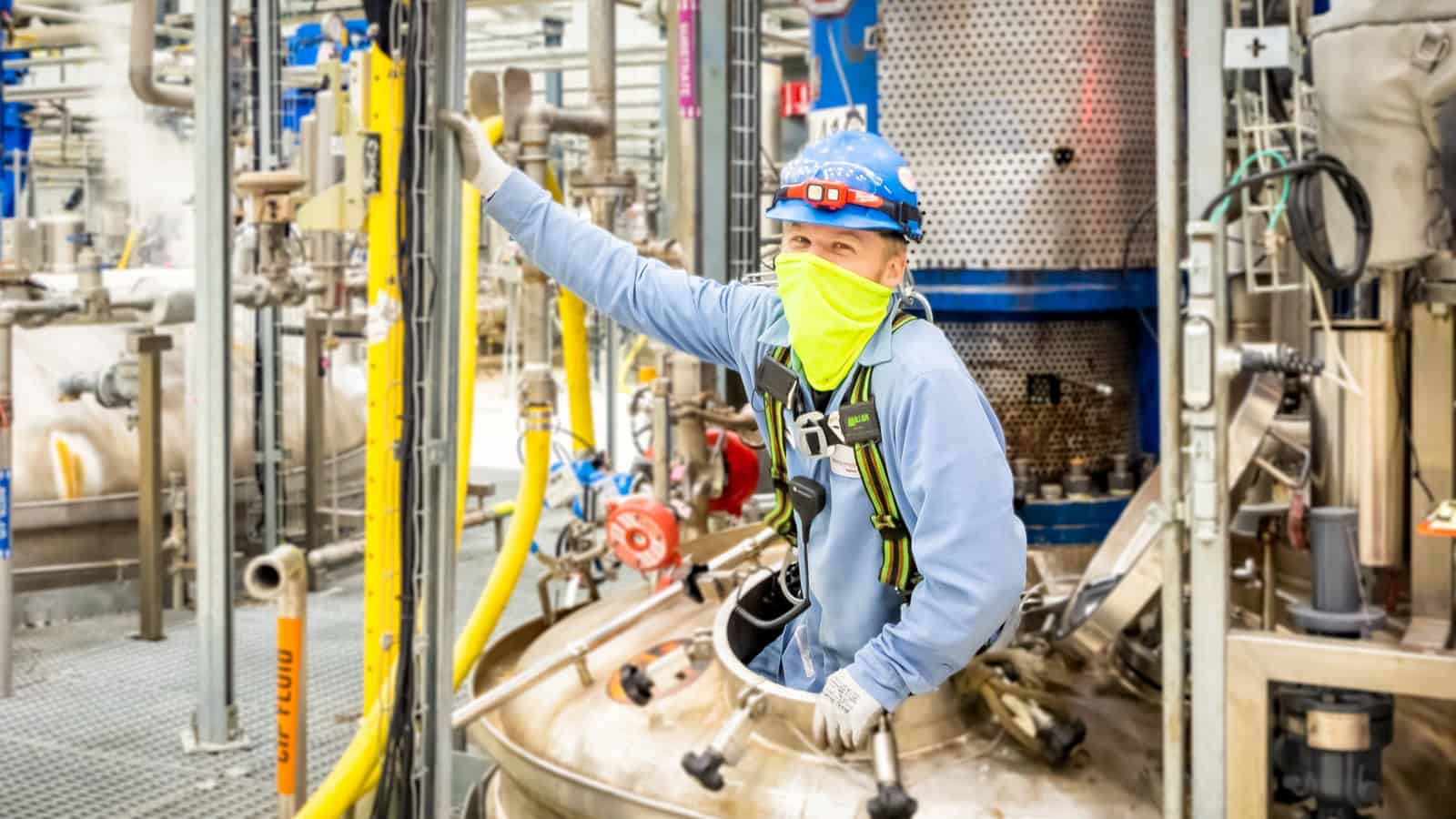
When it comes to good environmental stewardship, Novonesis takes its cue from the natural world itself.
“We are inherently sustainable because we draw from nature,” said Novonesis Senior Vice President of Planetary Health Biosolutions Rene Garza. “As biology matures, we find that nature has evolved to be an efficient utilizer of every single resource out there.”
Back to basics: It’s the perfect model for the newly formed Lyngby, Denmark–headquartered biosolutions firm, the product of a January merger between two Danish legacy companies: enzyme and microbial technology firm Novozymes and bioscience supplier Chr. Hansen.
- The portfolio of Novonesis—which is a combination of the Greek words for “new” and “beginning”—includes enzymes, microbes, novel vitamins and other naturally derived offerings.
- The business has customers across more than 30 industries: food and beverages, animal health and nutrition, energy, fine chemicals, dietary supplements, household care, plastics, plant health and more.
An early adopter: Legacy firm Novozymes set its sights on sustainable business practices more than two decades ago. In 2002, it became the first company in the world to publish a triple bottom-line integrated report.
- “We recognized early on that resources are finite, and the need to do more with less is part of ensuring a better quality of life,” Garza said of the company’s decision to undertake the annual report, a method of stocktaking on sustainability activities using three “bottom lines”: profit, people and planet. “We realized we’re not just here to generate money, but also to create an impact on society and our environment.”
Big goals: That’s why Novonesis has set lofty aims for itself (and is meeting them).
- Firmwide targets include carbon net neutrality by 2050, as well as a 75% reduction in emissions from its own operations and a 35% reduction in emissions from its supply chain by 2030.
- How is it doing all this? Innovation and persistence, according to Garza. “We want to improve our efficiency by as much as we can, and we do this by making improvement to our hardware—pump replacements, reengineering [of] our microorganisms. We also source renewable energy.”
- In fact, Novonesis is on track to source 100% of its energy from renewables by next year. Between 2018 and 2022, it reduced absolute emissions by 63% while increasing revenue.
Water, too: Novonesis knows how important water use is in the overall sustainability picture.
- The company is piloting a reverse-osmosis filtration system at its North America headquarters in Franklinton, North Carolina, that lets it recycle and reuse water. The program, scheduled for full operationality by next year, is going so well there are plans to replicate it at other Novonesis facilities worldwide.
- And at the company headquarters in Denmark, “we have been able to recycle 58 million liters [of water]—the equivalent of 23 Olympic-size swimming pools,” Garza reported.
What government can do: Novonesis and other manufacturers are making great strides in sustainability, but having the right policies in place at the federal level would make it easier for them to do more with less, Garza continued.
- “We need regulatory reform,” he told the NAM. “Federal regulations, if done well, really can drive innovation, particularly in biotechnology. … The government should [also] invest in pilot and demo scale fermentation capacity to allow startups to scale up.”
- The U.S. has the largest concentration of startup companies in the world, he went on, but there is now a “valley of death” between discovery and commercialization of innovations in biology, which federal funding could help remove.
- Finally, manufacturing in the U.S. needs the reinstatement of pro-growth policies from the 2017 Tax Cuts and Jobs Act, including 100% expensing for research and development costs and accelerated depreciation for capital investments.
Stakeholder education: Getting more people aboard the sustainability train is doable—but it will require continued education campaigns.
- “We need long-term thinking [and] to encourage stakeholders to prioritize the long-term over short-term gains,” Garza said. “Sustainability is about balancing immediate and future needs.”
